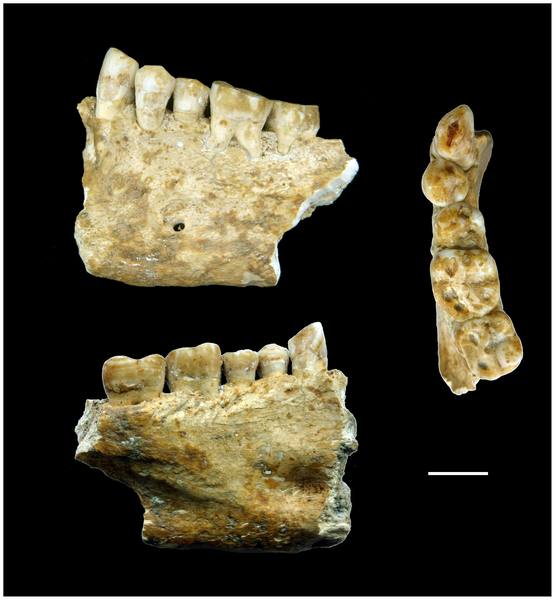Ancient evidence of prehistoric dentistry has been discovered in a Neolithic graveyard in Pakistan and other findings in a Neolithic graveyard near Parma have detailed creative tooth work. An artificial tooth from the cemetery of Gebel Ramlah, Egypt, dates back 5,500 years.
Yet a human tooth found partially embedded in calcite on the wall of a karstic cave near the village of Lonche, in northern Istria (Slovenia) dates back up to 6,655 years and has a crown filled with...beeswax. It was discovered with Upper Pleistocene fauna remains and is considered one of the most ancient anthropological remains from the northern-Adriatic area.
So what about that tooth filling?
Researchers used synchrotron radiation computed micro-tomography (micro-CT), Accelerator Mass Spectrometry (AMS) radiocarbon dating, Infrared (IR) Spectroscopy and Scanning Electron Microscopy (SEM) to determine date and wear. Results show that the exposed area of dentine resulted from occlusal wear and the upper part of a vertical crack affected enamel and dentin tissues and was filled with beeswax.

The Lonche jaw from a karstic cave of southern Slovenia. Scale bar, 10 mm. Credit: doi:10.1371/journal.pone.0044904.g001
But this happened shortly before or after the individual’s death, they determined. Why after, if that were the case? Research? Practice? If the filling was done while the person was still alive, it had to be to relieve tooth pain resulting from chewing on a cracked tooth and that provides the earliest known direct evidence of therapeutic-palliative dental filling.
The age of the tooth, 6,655-6,400 years ago, corresponds to the Neolithic in northern Istria and, the post-Vlaška phase. The area at the northern shore of the Adriatic Sea has many archaeological cave sites and rock shelters which were occupied and used for stabling animals. The Neolithic economy of the karstic area was mainly based on sheep breeding.
The research determined the dental patient was likely a 24– to 30-year-old male.
Why beeswax? It had been successfully used as a binding agent so that made some sense. Egyptians used honey and other materials to relieve pain so some bold thinker trying to fix the actual tooth problem and using beeswax was smart thinking. Lucky for us they did. Beeswax is composed of long-chain wax esters, unsaturated and saturated n-alkanes, diesters and hydroxyesters, so it has extreme chemical stability. Long enough to last 6,500 years.
Citation: Bernardini F, Tuniz C, Coppa A, Mancini L, Dreossi D, et al. (2012) Beeswax as Dental Filling on a Neolithic Human Tooth. PLoS ONE 7(9): e44904. doi:10.1371/journal.pone.0044904





Comments